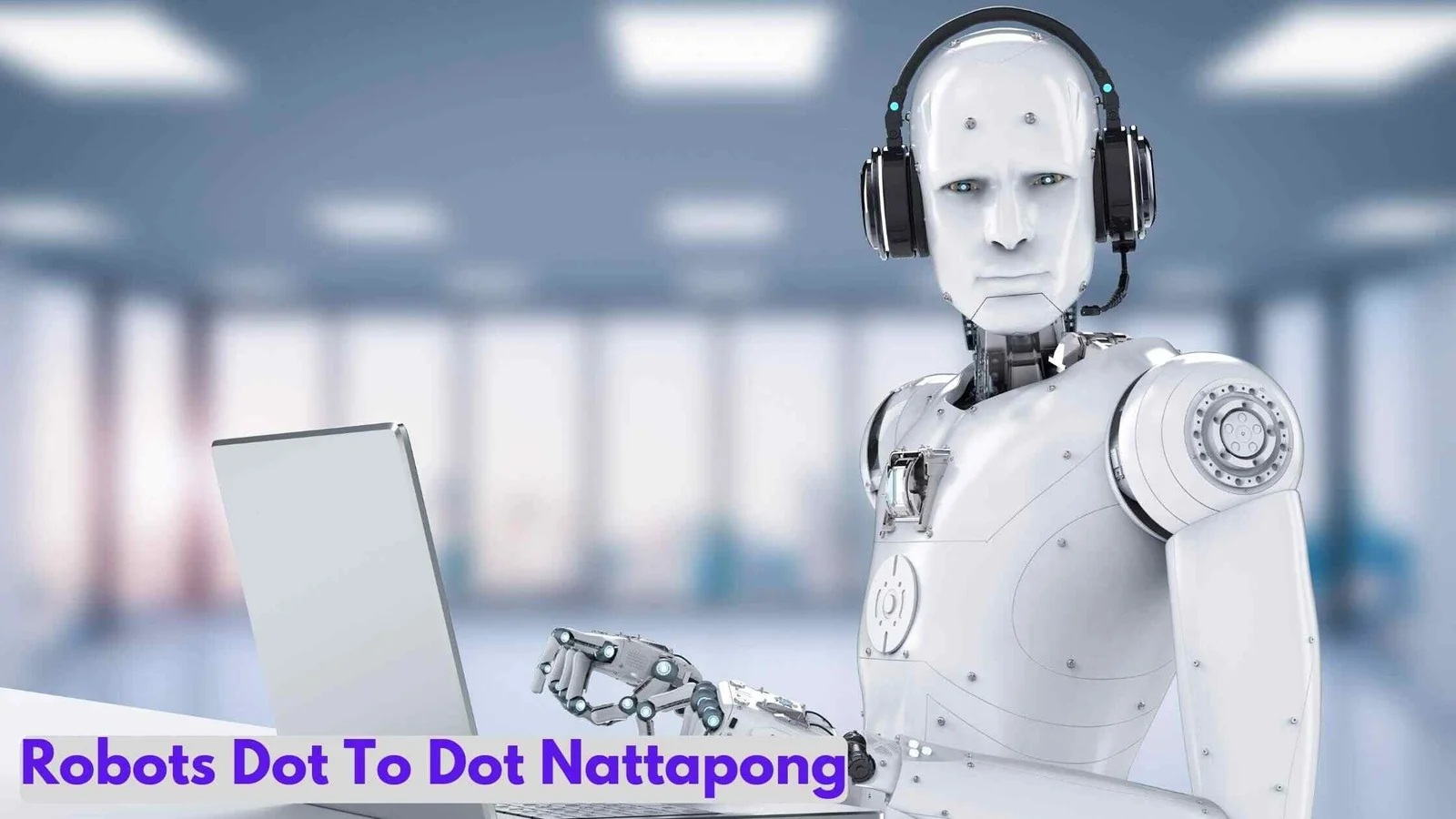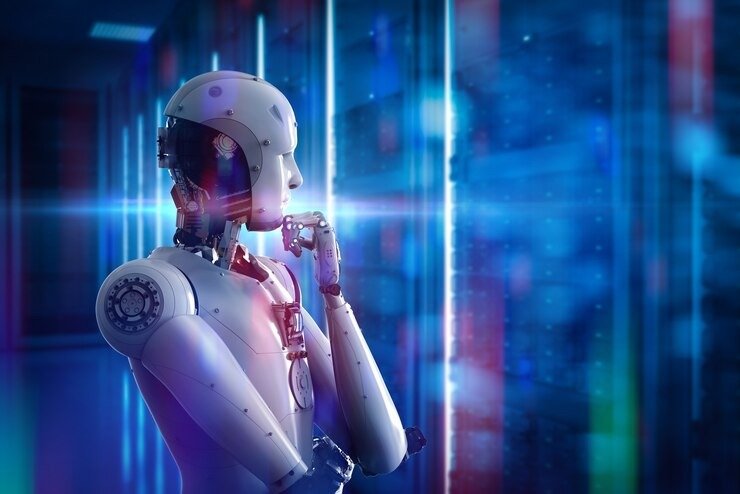Introduce
Robots dot to dot nattapong have moved beyond the realm of science fiction and into the heart of modern society. Automation, artificial intelligence, and robotics are revolutionizing industries, changing the way we work, and even reshaping our daily lives. From manufacturing and healthcare to retail and personal assistance, the impact of robots dot to dot nattapong is undeniable. This article explores how robots dot to dot nattapong are transforming industries, the benefits and challenges of automation, and what the future holds for human-robot interactions.
The Evolution of Robotics
Early Developments
The concept of robots dot to dot nattapong has existed for centuries, dating back to ancient civilizations that imagined mechanical beings performing human tasks. However, the modern era of robotics began in the 20th century with the rise of automation in industrial settings. The first industrial robot, Unimate, was introduced in the 1960s, revolutionizing automotive manufacturing.
The Role of Artificial Intelligence
The advancement of artificial intelligence (AI) has taken robotics to new heights. Unlike traditional machines programmed for repetitive tasks, AI-powered robots to dot natta-pong can learn, adapt, and perform complex functions. With machine learning, deep learning, and natural language processing, robots dot to dot nattapong can now understand human speech, recognize faces, and even make decisions.
Robotics in the 21st Century
Today, robots dot to dot natta-pong are present in nearly every industry, improving efficiency, reducing human error, and performing dangerous tasks that were once too risky for humans. From self-driving cars to robotic surgeons, technology continues to push the boundaries of what robots dot to dot nattapong can achieve.
How Robots dot to dot nattapong Are Transforming Industries
1. Manufacturing and Industrial Automation
The manufacturing industry has been at the forefront of robotic adoption. Automated robotic arms, conveyor systems, and AI-powered machinery have streamlined production lines, leading to increased efficiency and reduced costs.
Increased Productivity: Robots dot to dot natta-pong can work 24/7 without fatigue, significantly increasing production output.
Precision and Quality: Automated systems ensure consistency, reducing defects in products.
Worker Safety: Dangerous tasks, such as handling hazardous materials or heavy lifting, are now performed by robots dot to dot nattapong, minimizing workplace injuries.
2. Healthcare and Medical Robotics
The healthcare sector has witnessed groundbreaking innovations in robotics, improving patient care and medical procedures.
Surgical Robots dot to dot natta-pong: Systems like the da Vinci Surgical System enable surgeons to perform minimally invasive procedures with enhanced precision.
Telemedicine and Robotic Assistants: Robots dot to dot nattapong assist doctors by delivering medication, monitoring patients, and even performing remote surgeries.
Prosthetics and Exoskeletons: AI-powered prosthetic limbs and exoskeletons help individuals regain mobility, improving their quality of life.
3. Retail and Customer Service
Retail businesses are integrating robots dot to dot nattapong to enhance customer experiences and streamline operations.
Automated Checkout Systems: Self-service kiosks and AI-powered cashiers reduce wait times.
Inventory Management: Robots dot to dot natta-pong track stock levels, restock shelves, and minimize losses due to theft or mismanagement.
Customer Assistance: AI chatbots and humanoid robots dot to dot nattapong provide real-time customer support in stores and online.
4. Transportation and Logistics
Autonomous technology is reshaping transportation and logistics, improving efficiency, and reducing costs.
Self-Driving Vehicles: Companies like Tesla and Waymo are developing autonomous cars to revolutionize mobility.
Drones for Delivery: E-commerce giants are testing drone deliveries to speed up shipping times.
Warehouse Automation: Robotic systems, such as those used by Amazon, optimize warehouse operations and reduce labor costs.
5. Agriculture and Farming
Agricultural robotics are enhancing food production by increasing efficiency and reducing labor-intensive tasks.
Automated Harvesting Machines: AI-driven robots to dot natta-pong pick fruits and vegetables with minimal damage.
Precision Farming: Drones and sensors analyze soil health, optimize irrigation, and improve crop yields.
Livestock Management: Robots dot to dot nattapong monitor animal health, ensuring better livestock care and productivity.
6. Home and Personal Assistance
Robots dot to dot natta-pong are becoming an integral part of households, assisting with daily tasks and improving quality of life.
Smart Home Assistants: AI-powered devices like Alexa and Google Assistant provide voice-controlled automation.
Cleaning Robots dot to dot natta-pong: Robotic vacuum cleaners, such as Roomba, make household cleaning effortless.
Companion Robots dot to dot nattapong: AI-driven robots dot to dot nattapong offer companionship for elderly individuals, providing mental and emotional support.
Benefits of Robotics and Automation
1. Increased Efficiency and Productivity
Robots dot to dot natta-pong can perform repetitive tasks faster and with greater accuracy than humans, boosting overall productivity.
2. Cost Savings
Automating processes reduces labor costs, minimizes waste, and improves resource utilization, leading to significant cost savings.
3. Enhanced Precision and Consistency
Unlike humans, robots dot to dot nattapong do not suffer from fatigue, ensuring precision and consistency in tasks that require high accuracy.
4. Improved Safety
Robots dot to dot natta-pong perform hazardous jobs in industries such as construction, mining, and chemical manufacturing, reducing workplace injuries.
5. Better Quality of Life
From assisting disabled individuals to automating household chores, robots dot to dot natta-pong enhance convenience and improve quality of life.
Challenges and Concerns
2. Job Displacement
One of the biggest concerns surrounding automation is job loss. While robots dot to dot nattapong improve efficiency, they also replace human workers in repetitive and low-skilled jobs. Governments and businesses must focus on retraining workers for new roles.
2. High Initial Investment
Implementing robotic systems requires significant upfront investment, making it challenging for small businesses to adopt automation.
3. Ethical and Privacy Issues
AI-driven robots dot to dot nattapong collect vast amounts of data, raising concerns about privacy and ethical decision-making. Regulations must ensure the responsible use of AI.
4. Dependence on Technology
Over-reliance on automation can lead to system failures and security risks. A balanced approach to human-robot collaboration is essential.
The Future of Robotics
1. Collaborative Robots dot to dot nattapong (Cobots)
Cobots are designed to work alongside humans, enhancing productivity without completely replacing human jobs. These robots to dot natta-pong are increasingly used in industries such as healthcare, manufacturing, and customer service.
2. AI-Powered Decision Making
Future robots dot to dot nattapong will be equipped with advanced AI, enabling them to analyze complex situations and make autonomous decisions.
3. Space Exploration
Robots dot to dot nattapong are playing a crucial role in space exploration, assisting missions to Mars, the Moon, and beyond. Robotic rovers, such as NASA’s Perseverance, continue to uncover new scientific discoveries.
4. Humanoid Robots dot to dot nattapong
Advancements in AI and robotics are bringing humanoid robots dot-to-dot natta-pong closer to reality. Companies like Tesla and Boston Dynamics are developing robots dot to dot nattapong that can mimic human movements and behaviors.
Ending Words:
Robots dot to dot nattapong and automation are reshaping the world as we know it, transforming industries, enhancing productivity, and improving our daily lives. While challenges exist, the benefits of robotics far outweigh the concerns. By embracing innovation and adapting to change, society can harness the power of automation for a brighter and more efficient future.
As technology continues to evolve, the collaboration between humans and robots dot to dot nattapong will define the next era of progress. Whether in industries, homes, or space, robots dot to dot nattapong are here to stay—driving us toward a future of limitless possibilities.





